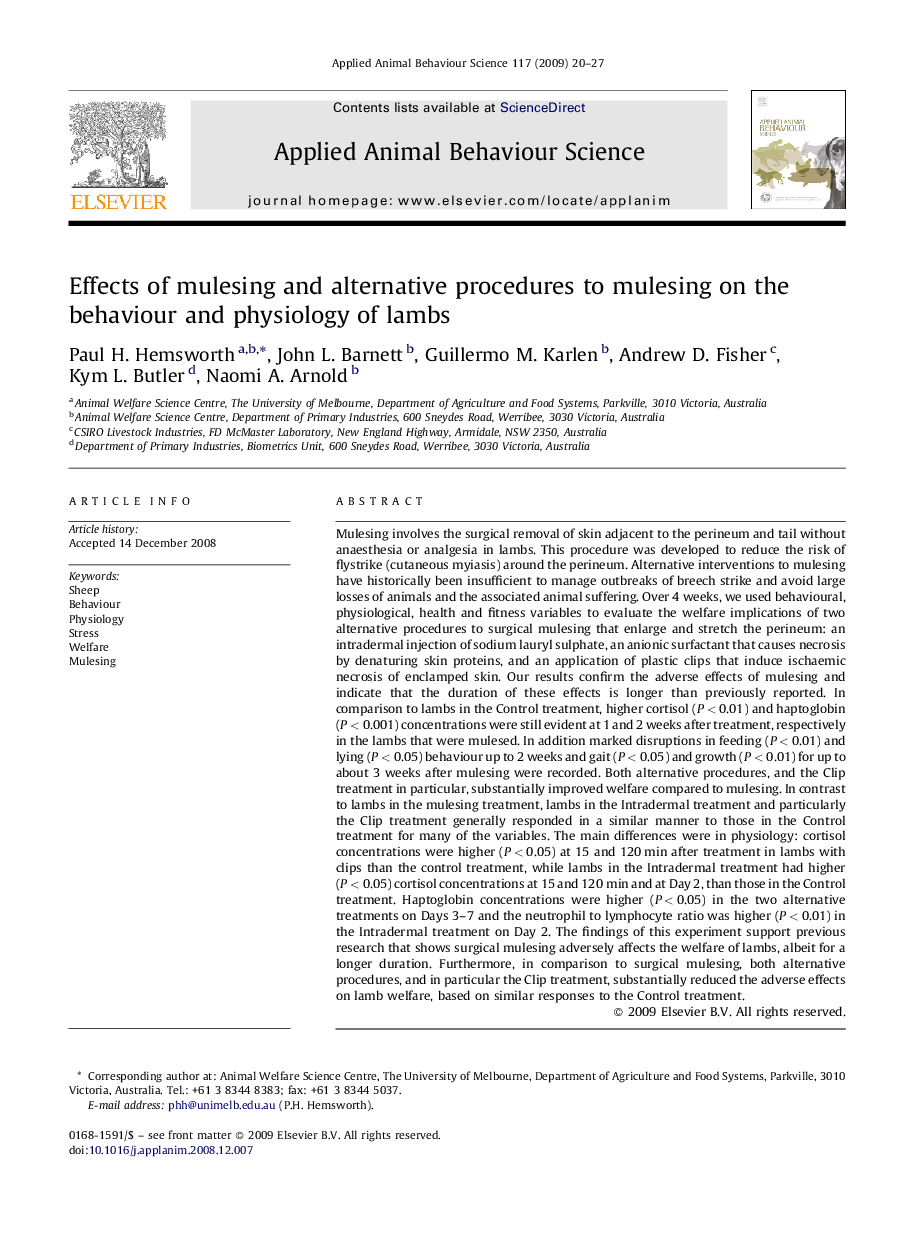| Article ID | Journal | Published Year | Pages | File Type |
|---|---|---|---|---|
| 4523704 | Applied Animal Behaviour Science | 2009 | 8 Pages |
Mulesing involves the surgical removal of skin adjacent to the perineum and tail without anaesthesia or analgesia in lambs. This procedure was developed to reduce the risk of flystrike (cutaneous myiasis) around the perineum. Alternative interventions to mulesing have historically been insufficient to manage outbreaks of breech strike and avoid large losses of animals and the associated animal suffering. Over 4 weeks, we used behavioural, physiological, health and fitness variables to evaluate the welfare implications of two alternative procedures to surgical mulesing that enlarge and stretch the perineum: an intradermal injection of sodium lauryl sulphate, an anionic surfactant that causes necrosis by denaturing skin proteins, and an application of plastic clips that induce ischaemic necrosis of enclamped skin. Our results confirm the adverse effects of mulesing and indicate that the duration of these effects is longer than previously reported. In comparison to lambs in the Control treatment, higher cortisol (P < 0.01) and haptoglobin (P < 0.001) concentrations were still evident at 1 and 2 weeks after treatment, respectively in the lambs that were mulesed. In addition marked disruptions in feeding (P < 0.01) and lying (P < 0.05) behaviour up to 2 weeks and gait (P < 0.05) and growth (P < 0.01) for up to about 3 weeks after mulesing were recorded. Both alternative procedures, and the Clip treatment in particular, substantially improved welfare compared to mulesing. In contrast to lambs in the mulesing treatment, lambs in the Intradermal treatment and particularly the Clip treatment generally responded in a similar manner to those in the Control treatment for many of the variables. The main differences were in physiology: cortisol concentrations were higher (P < 0.05) at 15 and 120 min after treatment in lambs with clips than the control treatment, while lambs in the Intradermal treatment had higher (P < 0.05) cortisol concentrations at 15 and 120 min and at Day 2, than those in the Control treatment. Haptoglobin concentrations were higher (P < 0.05) in the two alternative treatments on Days 3–7 and the neutrophil to lymphocyte ratio was higher (P < 0.01) in the Intradermal treatment on Day 2. The findings of this experiment support previous research that shows surgical mulesing adversely affects the welfare of lambs, albeit for a longer duration. Furthermore, in comparison to surgical mulesing, both alternative procedures, and in particular the Clip treatment, substantially reduced the adverse effects on lamb welfare, based on similar responses to the Control treatment.
